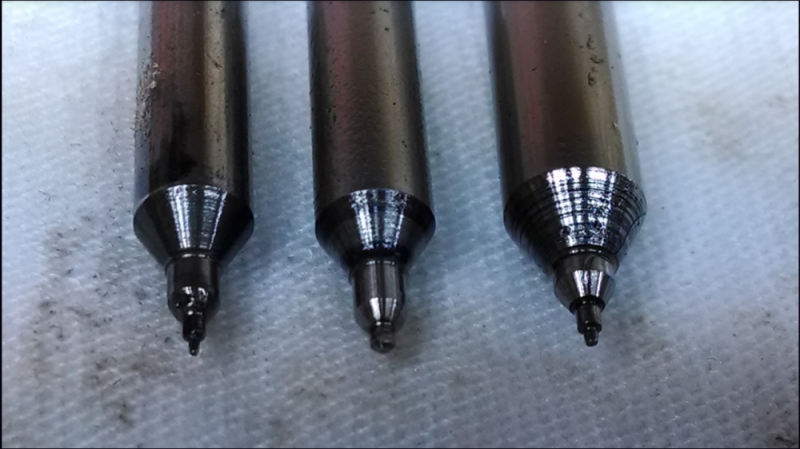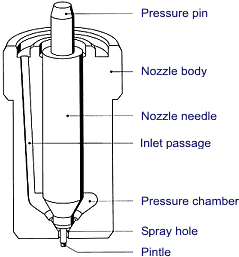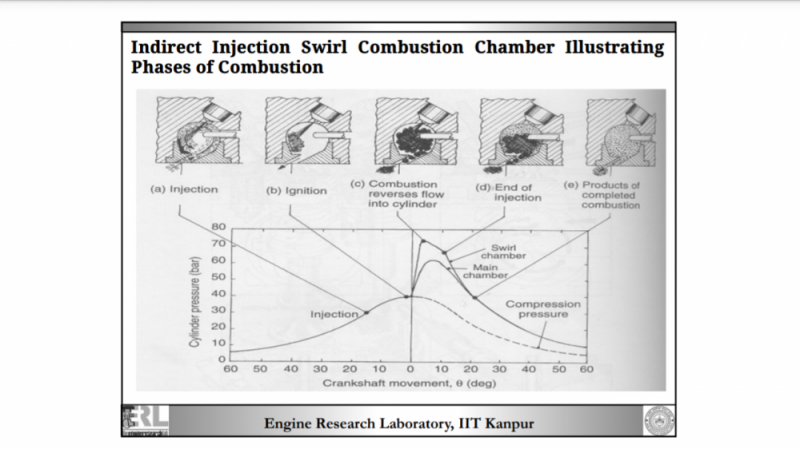Rockabillyrat
SlIgHtLy StUpId.
Some of you might know I've been spending alot of time researching and developing an injector nozzle in hopes of picking up some extra HP and MPG. (I know I know a full write up on that is coming very soon.) But I shifted gears and started looking into pre combustion chamber designs because I feel injectors and cups have a direct relationship to each other. And after reading alot of research papers I've come to the conclusion that we might be going about this all wrong.
For as long as I can remember marine injectors and diamond pre cups have been the go to for performance set ups. But the more and more i dig into this I think we are going backwards. Thinking that gm engineers changed the injector flow rate curve and cup sizes for power is comical. These are light duty economy engines that's what they are built for. I believe all the changes made to the 6.5 vs the 6.2 was simply for emmisions and nothing else. After all look at the era the 6.5 comes from. Ford didn't change their cup design nearly as much as gm did. And those guys and making more hp than we are. It may have something to do with the fact that these engines ended up in 1/2 ton trucks and emmision standards are different in lighter vehicles.
A idi relies on heat and a high velocity of air entering the pre combustion chamber to atomize the fuel and start the combination process. The combustion pressure then pushes the remaining air/fuel mixtute out the chamber. A pressure drop at the cup throat farther atomizes the fuel before it finishes the combustion process in the cylinder.
I found a research paper "combustion characteristics of a swirl chamber type diesel engine" and it had some interesting information. It compared different pre combustion cup throat sizes and angles and what effect it had on the combustion process. Here is where things get interesting. I'm going to focus mostly on throat sizes because that seems to be the biggest difference between all of the cups offered in the 6.x platform.
The smaller the throat size the greater the velocity entering the pre combustion chamber. And it has the same affect on the air/fuel mixture leaving the cup. More velocity equals more atomization. It also speeds up the combustion process. Faster burn makes higher cylinder pressure causing a harder push on the piston. In other words more power!!!
A larger throat has the opposite affect. Slower velocity in and out of the chamber resulting in less atomization. Creating a longer burn time making less cylinder pressure.
Compression ratio can also have an affect on air velocity into the chamber
With this information I think there may be an advantage to using the smaller pre combustion cups. But to get the best affect the correct injector flow rate curve and spray pattern need to be used with the smaller cup.
I'm not going to get too heavy on this subject because I'm saving some of this info for my injector write up.... Because of the high air velocity entering the pre combustion chamber an idi can use a very course spray patter. The combination of vaporizing on the cup/ chamber walls and air velocity does a great job of atomizing the fuel. Ricardo himself did testing on spray patterns and found that a course spray pattern with large volume and short duration made the best power. It has a faster burn time making higher cylinder pressure. Also a course pattern gets more fuel into the cylinder resulting in more combustion pressure on the piston. While a fine spray pattern with long duration does the opposite. Longer burn time with less cylinder pressure and less combustion pressure on the piston due to more combustion in the chamber. But I think there can be too much of a good thing though. A very course single shot injection event could make the most power. But could have horrible idle and cold start characteristics.
In conclusion I think the smaller pre combustion cup combined with a course spray patter that has a large flow rate and short duration may be the trick to getting more performance out of these old oil burners. It will have a faster burn rate resulting in higher cylinder pressures. And the small throat size will cause a higher air velocity into the chamber and better atomization of the suspended fuel entering the cylinder from the chamber. Just have to find the right combination of both.
But I'm no expert and you can take what I have to say with a grain of salt. Have a great day everyone!
(P.s. sorry for any misspelled words or grammar mistakes.)
For as long as I can remember marine injectors and diamond pre cups have been the go to for performance set ups. But the more and more i dig into this I think we are going backwards. Thinking that gm engineers changed the injector flow rate curve and cup sizes for power is comical. These are light duty economy engines that's what they are built for. I believe all the changes made to the 6.5 vs the 6.2 was simply for emmisions and nothing else. After all look at the era the 6.5 comes from. Ford didn't change their cup design nearly as much as gm did. And those guys and making more hp than we are. It may have something to do with the fact that these engines ended up in 1/2 ton trucks and emmision standards are different in lighter vehicles.
A idi relies on heat and a high velocity of air entering the pre combustion chamber to atomize the fuel and start the combination process. The combustion pressure then pushes the remaining air/fuel mixtute out the chamber. A pressure drop at the cup throat farther atomizes the fuel before it finishes the combustion process in the cylinder.
I found a research paper "combustion characteristics of a swirl chamber type diesel engine" and it had some interesting information. It compared different pre combustion cup throat sizes and angles and what effect it had on the combustion process. Here is where things get interesting. I'm going to focus mostly on throat sizes because that seems to be the biggest difference between all of the cups offered in the 6.x platform.
The smaller the throat size the greater the velocity entering the pre combustion chamber. And it has the same affect on the air/fuel mixture leaving the cup. More velocity equals more atomization. It also speeds up the combustion process. Faster burn makes higher cylinder pressure causing a harder push on the piston. In other words more power!!!
A larger throat has the opposite affect. Slower velocity in and out of the chamber resulting in less atomization. Creating a longer burn time making less cylinder pressure.
Compression ratio can also have an affect on air velocity into the chamber
With this information I think there may be an advantage to using the smaller pre combustion cups. But to get the best affect the correct injector flow rate curve and spray pattern need to be used with the smaller cup.
I'm not going to get too heavy on this subject because I'm saving some of this info for my injector write up.... Because of the high air velocity entering the pre combustion chamber an idi can use a very course spray patter. The combination of vaporizing on the cup/ chamber walls and air velocity does a great job of atomizing the fuel. Ricardo himself did testing on spray patterns and found that a course spray pattern with large volume and short duration made the best power. It has a faster burn time making higher cylinder pressure. Also a course pattern gets more fuel into the cylinder resulting in more combustion pressure on the piston. While a fine spray pattern with long duration does the opposite. Longer burn time with less cylinder pressure and less combustion pressure on the piston due to more combustion in the chamber. But I think there can be too much of a good thing though. A very course single shot injection event could make the most power. But could have horrible idle and cold start characteristics.
In conclusion I think the smaller pre combustion cup combined with a course spray patter that has a large flow rate and short duration may be the trick to getting more performance out of these old oil burners. It will have a faster burn rate resulting in higher cylinder pressures. And the small throat size will cause a higher air velocity into the chamber and better atomization of the suspended fuel entering the cylinder from the chamber. Just have to find the right combination of both.
But I'm no expert and you can take what I have to say with a grain of salt. Have a great day everyone!
(P.s. sorry for any misspelled words or grammar mistakes.)



